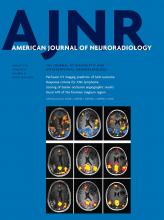Spontaneous coronary artery dissection (SCAD) accounts for 1%–4% of all acute coronary syndromes and is the culprit in up to 35% of myocardial infarctions (MIs) in women younger than 50 years of age.1 An association between fibromuscular dysplasia (FMD), other nonatherosclerotic arteriopathies, pregnancy, systemic inflammatory conditions, and SCAD has been reported.1 For many patients, SCAD may be the first manifestation of an underlying disease that could put them at increased risk of repeat coronary and extracoronary ischemic events. Among these is the risk of cervical artery involvement, making patients susceptible to stroke leading to increased morbidity and mortality. Unfortunately, there is little information on the presence of aneurysms, dissection, or tortuosity in the cervical arteries of those with SCAD.
The article by Benson et al2 provides complete angiographic details of cervical artery abnormalities in patients with spontaneous coronary artery dissection. In a retrospective review, Benson et al examined 214 patients who were enrolled in the Mayo Clinic SCAD registry from 2011 to 2015. All patients had CTA of the neck after the initial SCAD event. As in other published data, patients were almost exclusively women (95.8%), with an average age of 54 years. Similar to prior studies, there was a low prevalence of common cardiovascular risk factors, hypertension and hyperlipidemia (both 33%), compared with patients with atherosclerotic MI.2⇓-4
Prior studies with a thorough screening of head-to-pelvis imaging with either high-resolution CTA or MR angiography or conventional angiography have reported a >50% prevalence of concomitant multifocal FMD.1,3⇓-5 Not surprisingly, Benson et al2 corroborated the known association between FMD and SCAD because 50.5% of patients were found to have FMD in at least 1 noncoronary arterial bed. Specifically, 39% of patients were found to have cervical artery FMD, which was also the most common location, followed by renal FMD in 32% of patients. This finding also mirrors the findings of the US Registry for fibromuscular dysplasia, in which renal and cerebrovascular beds are the most commonly reported locations of FMD.6 Additionally, Benson et al reported significant tortuosity in the carotid arteries such as a kink, loop, coil, or a retropharyngeal or retrojugular course in 46% of patients.2 These findings have been reported in other studies as well. McNair et al,3 similarly, showed that FMD was highly prevalent in the SCAD population (63%), with similar rates of carotid (38%) and renal (50%) FMD when imaged. They also reported that 70% of patients had additional non-FMD vascular abnormalities albeit their imaging included vessels from the head to pelvis.3 Saw et al7 reported FMD in 63% of patients with SCAD, of whom 49% had involved cerebrovascular anatomy. Additionally, 5% and 12% of patients had other connective tissue disorders and systemic inflammatory disorders, respectively. These conditions were rarely reported by Benson et al2 (9/221 patients). A multicenter study from Saw et al4 involving 750 patients with SCAD reported FMD in 31.1% (45.2% had no or incomplete screening), systemic inflammatory diseases in 4.7%, peripartum conditions in 4.5%, and connective tissue disorders in 3.6% of patients.
The findings of FMD and other extracoronary vascular abnormalities can be clinically vital. Patients with FMD have a high incidence of cervical artery dissection (16% in carotid and 5% in vertebral arteries) and intracranial aneurysms (13%), often manifest as a cerebrovascular ischemic event.8,9 Other studies have reported a 5%–23% prevalence of cerebral aneurysms in patients with SCAD.3,4,7,10
Benson et al2 make a clear distinction between cervical artery FMD and non-FMD cervical arterial abnormalities, but this distinction may not be that clear. Specific forms of tortuosity, specifically the S-curve and cervical artery dissections, can be considered FMD equivalents, particularly if FMD is present in other vascular beds.6 Reclassifying these may further increase the prevalence of FMD in patients SCAD.
Researchers, clinicians, and patients seek to know whether these other noncoronary systemic arterial abnormalities are part of the same disease process. Most interesting, genome-wide association studies recognize the increased risk for SCAD, FMD, cervical artery dissection, and migraine headaches in patients who have a single nucleotide polymorphism rs9349379 (A) of the PHACTR1 gene (locus 6p24).11,12
It does appear that SCAD is not a solitary disease. The publication by Benson et al2 substantially adds to the existing literature, which underscores the systemic nature of SCAD and the need to screen vascular beds beyond the coronary arteries in these patients. The clinical conundrum is whether all these conditions, SCAD, FMD, cervical artery dissection, pseudoaneurysms, and others, are a part of a larger syndrome with underlying similar genetic and clinical findings.
References
- © 2021 by American Journal of Neuroradiology











